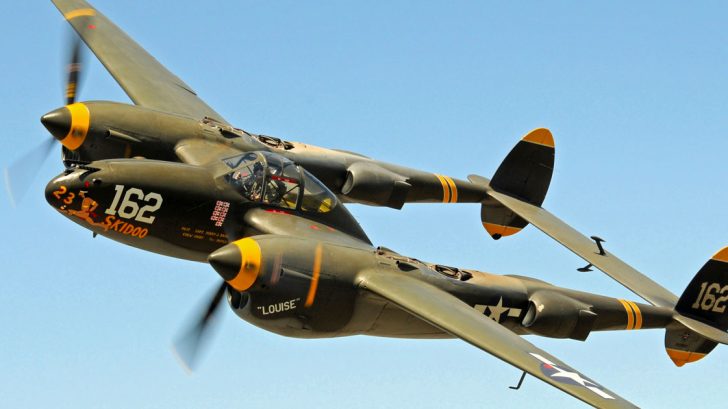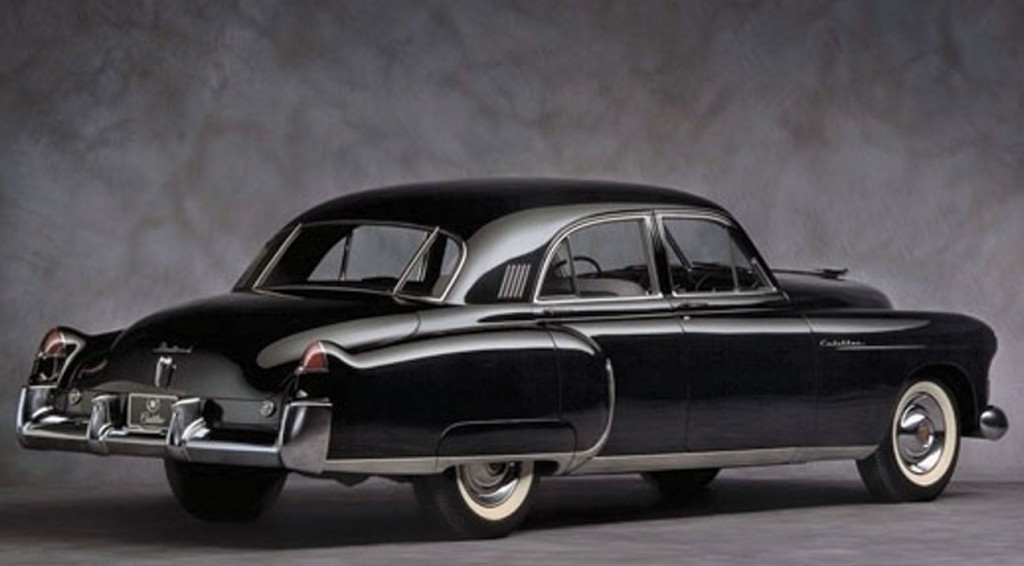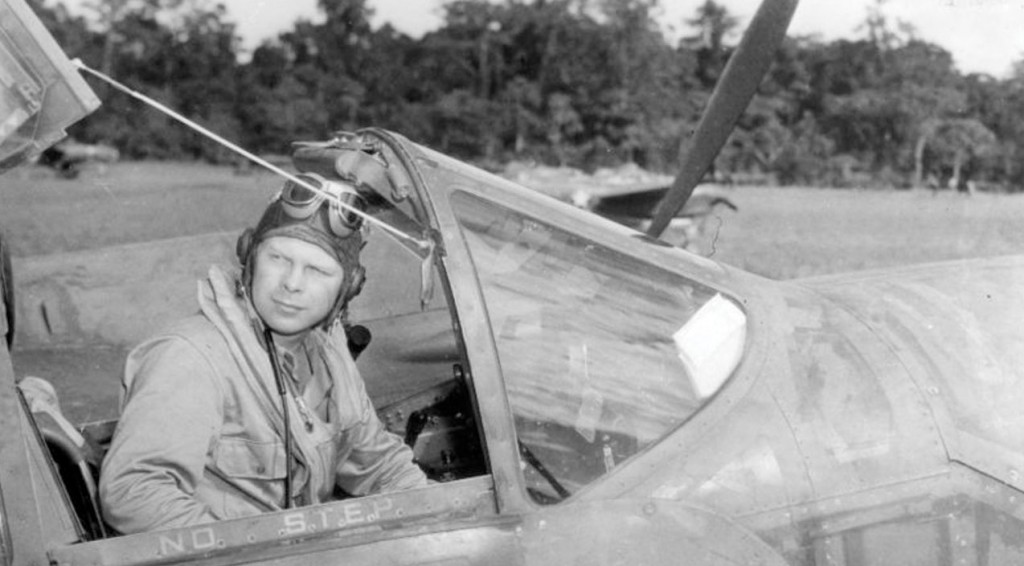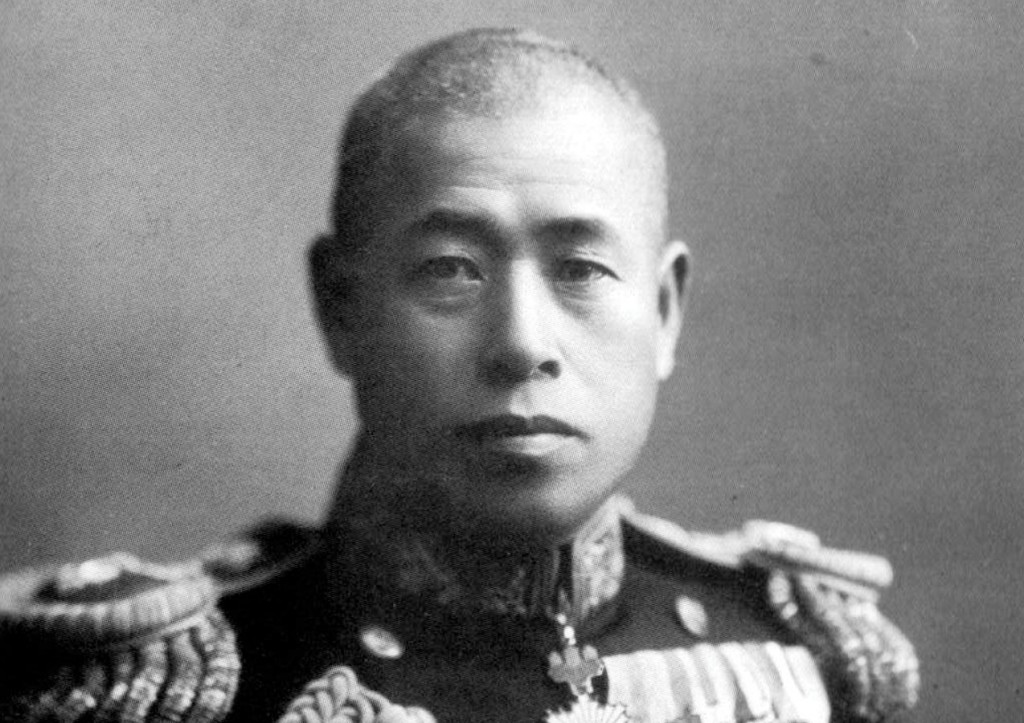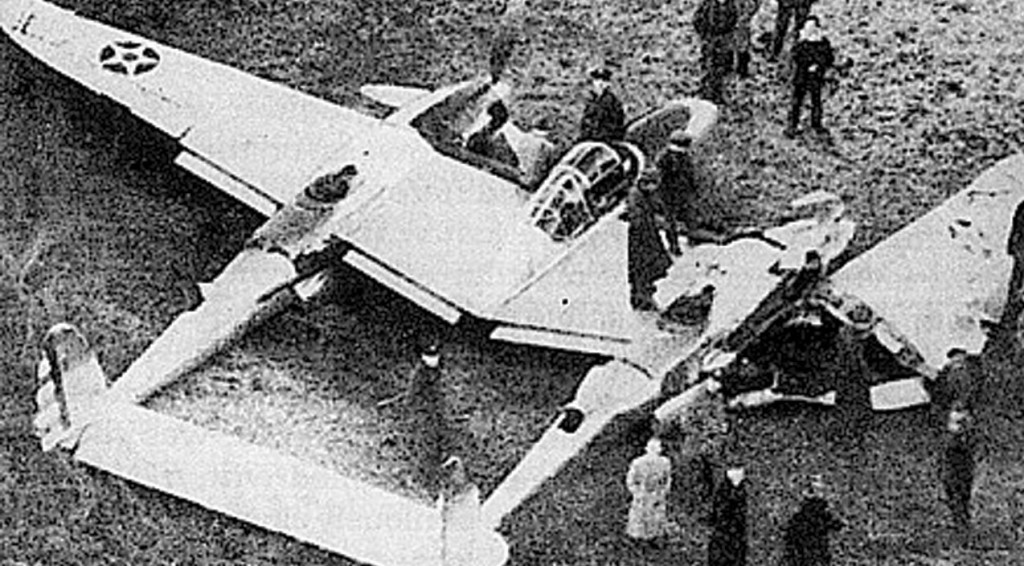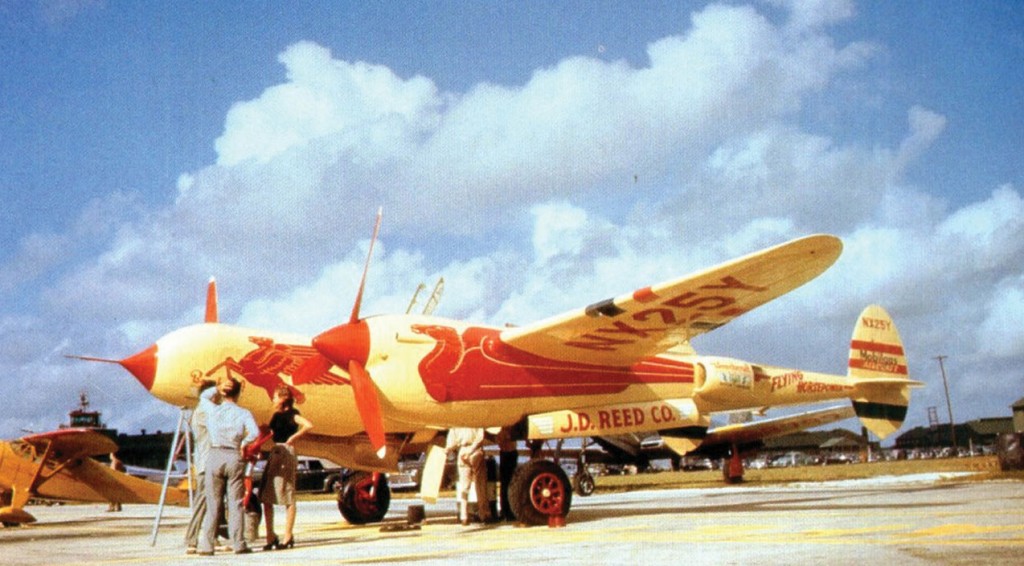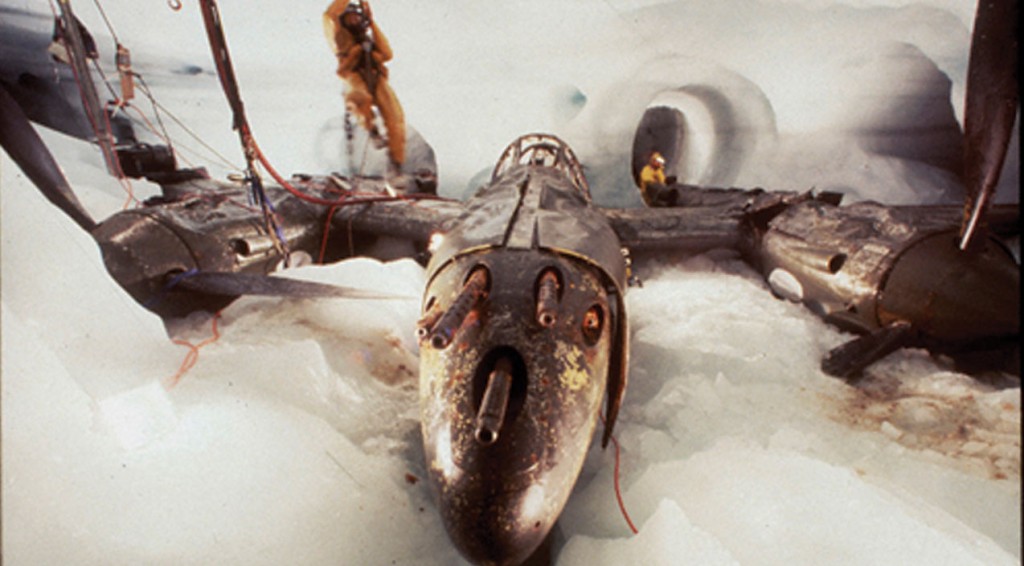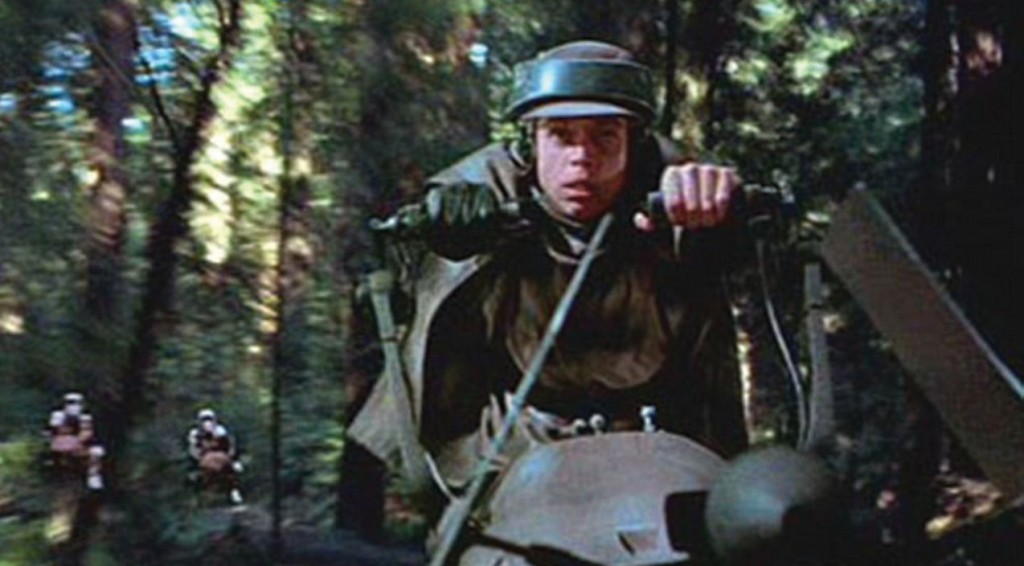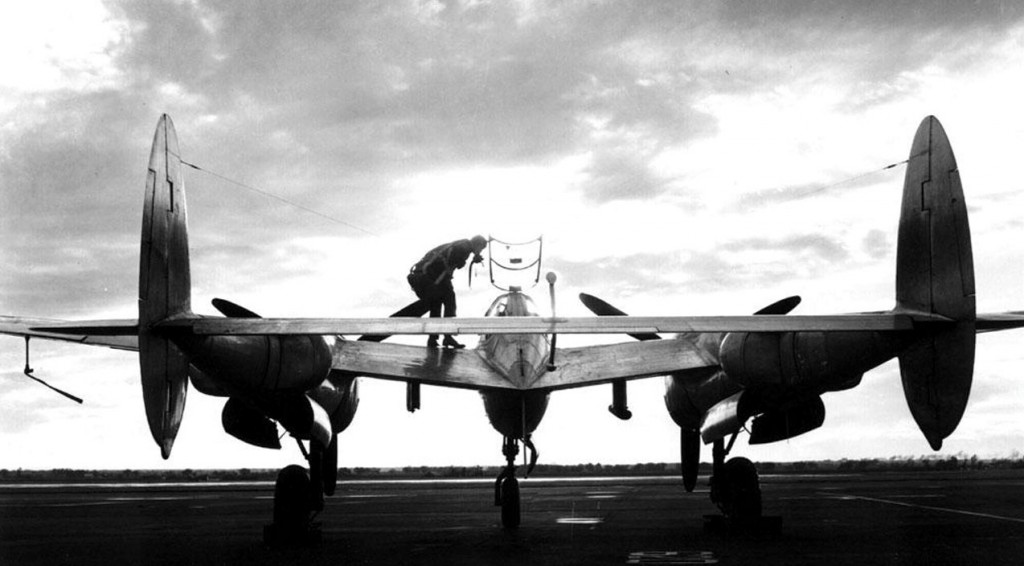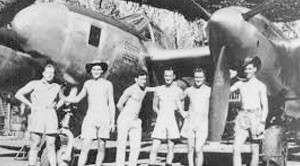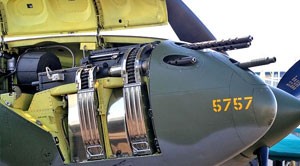Alright, Hope You Pick Something Up Here To Outsmart Your Friends With!
1. Car Tailfins Were Inspired By The Lightning’s Prototype
When automotive designer Harley Earl set out to draw up the next wave of new car designs, he drew inspiration from the unique look of the Lightning’s twin booms. This started a two decade long competition between automotive companies who tried to come up with the wildest, most intricate tailfin designs. Unfortunately, none of them were as good looking as the Lightning.
2. The Top Three USAAF Aces Flew Lightnings
sr:wikipedia.com
Richard I. Bong, Thomas McGuire and Charles H. MacDonald had 40, 38 and 36 confirmed kills respectively. They all flew P-38s, with Bong naming his Marge and McGuire giving his the name of Pudgy V. MacDonald named his girl Putt Putt Maru.
3. P-38s Were Responsible For Shooting Down The Mastermind Behind The Attack On Pearl Harbor
sr:en.wikipedia.org
Due to U.S. naval intelligence effort dubbed Magic, 16 Lightnings were sent out to ambush Admiral Isoroku Yamamoto’s transport. Pitted against 6 Japanese Zeros as part of the escort, the result of the ensuing dogfight ended in the Admiral’s Mitsubishi G4M bomber plummeting into the jungles of Papua New Guinea.
4. The P-38 Prototype Set A World Record Flying From Coast To Coast
sr: p38assn.org
In 1939, Lightnings prototype, designated XP-38, was flown by Ben Kelsey from coast-to-coast of the United States in 7 hours and 2 minutes. Although it resulted in a crash landing, the historic flight set a world record and solidified Lockheed’s design in the fight during World War II.
5. Post World War II, A Number Of Them Became Competitive Air Racers
sr:warbirdnews.com
Like many World War II planes that were produced by the thousands, there was a major surplus of P-38s after the war. Some were, in turn, sold off as surplus to private parties, painted in flashy colors and were often seen slashing between pylons at various air races during the 40s and 50s.
6. The Now Airworthy Glacier Girl Was A Part Of The Lost Squadron
sr:flickr.com
On July 15th, 1942, six Lightnings and two Flying Fortresses had to make an emergency landing on an ice cap in Greenland. All the crews were collected unharmed, but the Lost Squadron was left there to freeze. Five decades later, one of the P-38 was recovered by a team of aviation enthusiasts, who removed her from under 250 feet of ice. She’s now restored and flying under the adequate name of Glacier Girl.
7. The Sound Of The Speeder Vehicle In Star Wars Was A Recording Of The Lightning’s Engine
sr:butlerautogroup.files.wordpress.com
To be perfectly accurate, it was actually a sound of the relatively quiet P-38 engines combined with the diving whistle of a P-51 Mustang. Next time you revisit Return of the Jedi, you’re sure to tell this to whoever is around you!
8. Their Design Earned Them Two Unique Nicknames
sr:youtube.com
As their twin booms were quite distinct and they fought like hell once in the air, seeing an incoming Lightning was sure to stir fear in the enemy. For this reason, the Germans called them ‘the fork-tailed devil’ while the Japanese dubbed them ‘two planes, one pilot.’
9. Early Lightning Pilots Flew In Just Sneakers, Shorts And A Parachute
sr:pacificaces.0catch.com
The first P-38s did not allow the pilot to open his canopy mid-flight as their design would cause major buffeting. With the tropical weather in the Pacific Theater, the heat in the cockpit got so unbearable that pilots were known to get out of uniform until the temperature regulation issues were fixed in later variants.
10. Their Machine Guns Had 4 Times The Range Of Other Fighters
sr:flickr.com
While most warbirds of the era had wing mounted machine guns, the Lightning’s design made that concept tricky if not impossible and called for the armament to be placed in the nose. As the shells were not fired from the wings and did not have pattern convergence, pilots were able to shoot straight with the bullets traveling up to 1,000 yards, approximately 800 yards further than most fighters of the time.

